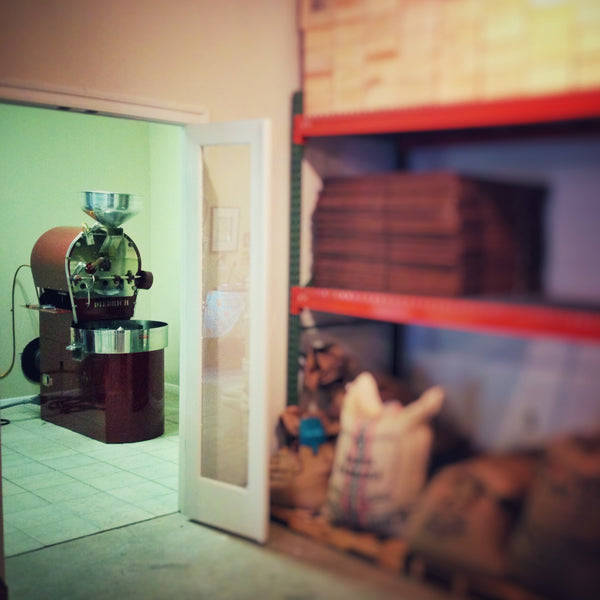Before coffee ever reaches your cup, its essence is locked away from the world - captive in a “green” coffee bean. The roasting process develops the bean’s flavors and coaxes a coffee to perfection, at temperatures of anywhere from 300 to 450 degrees Fahrenheit.
As the carbohydrates in the raw beans break down, hundreds of aromatic chemical compounds develop and the flavor profile of the coffee begins to emerge. Acids are broken down, adding texture and flavor to the cup. Fragrant oils and fats bloom to the bean’s surface, escaping through the bean’s weakened cell walls.
Coffee is often roasted in large, rotating drums that are set above a flame. Conduction and convection slowly add heat to ensure beans are evenly roasted. During the roast, beans go through a transformation, expanding to nearly double their original size. As heat increases, beans begin to change color, from green to yellow and then tan. Excess water in the beans cooks off, such that the beans’ moisture content of eight to fourteen percent drops to around two percent. Depending on the roast level, the color of the finished coffee beans can range anywhere from milk chocolate to charcoal.
Coffee beans exhibit two major reactions during the roast that can be identified by rapid popping sounds coming from within the roasting drum. “First crack” occurs at around 400 degrees Fahrenheit, when moisture within the beans reaches a boil and an audible “cracking” sound can be heard from within the roasting drum. The once “green beans” now have turned a light shade of brown, and entered the desirable range for specialty coffee.
Depending on the characteristics of the roast, the coffee beans may be allowed to reach “second crack,” which occurs at about 450 degrees Fahrenheit. At some point between first and second crack, chemical reactions that degrade amino acids, sugars, phenolic acids, and lipids result in hundreds of aromatic compounds forming the elixir that many people expect from their coffee.

At the desired temperature – which varies depending on the coffee varietal selected – the roaster will open the door of the roasting drum and drop the beans onto a cooling tray to dissipate heat and halt the process. It’s up to the roaster to keep a watchful eye, taking care that each coffee varietal isn’t roasted beyond its idiosyncratic limits. In that sense, coffee roasting is as much an art as a science. On average, beans are roasted anywhere between 9 and 14 minutes, but even a slight variation in temperature and roasting time can radically alter the ultimate flavor profile of a batch of coffee beans.


1 comment
One of the best posts I have ever come across. Not only did I learn a lot of hidden things. Keep uploading and encouraging us.
Also, I would like to share an informative resource with you that I found over the internet here is the link to that resource https://wideawakecoffee.com/